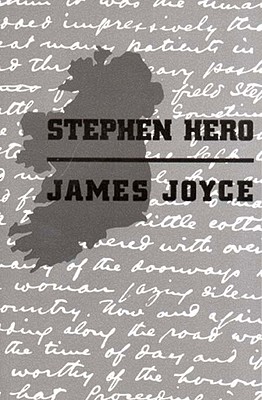APS TOGETHER
Day 5
Stephen Hero by James JoyceXIX, pp. 76-98
January 16, 2022 by Belinda McKeon
Stephen is working obsessively on his paper for the Literary & Historical Society. His labors are fueled by a conviction of the importance of his voice (“a voice of my generation,” he might say); he wants nothing to do with “the programme of the patriots” which is gathering force around him, and puts his energy instead into building his own aesthetic theory. If there is a reader who could get through Stephen’s disquisition on a free art without having their eyes glaze over, roll into the back of their head or dart towards the decidedly non-Aquinian space of their phone, they deserve a medal, or perhaps a subscription to The Thomist, but suffice to say here that Stephen’s theory draws heavily on Joyce’s 1902 essay “James Clarence Mangan”, as well as on his 1903-04 notebooks from his Paris years, named Jim in Paris (not really, but are you reading, Netflix?), when he was thinking more deeply about some of the texts on scholasticism and metaphysics which he had read at University College, Dublin and coming up with what Stephen here calls a “cone-shaped” theory of art. Which…I’ll explain next time. Honest.
When Stephen has finally finished his essay, he finds it necessary to change the title (originally intended to be called “Drama and Life,” it is now “Art and Life”) because he has “occupied himself so much with securating the foundations that he (has) not left himself space enough to raise the complete structure.” Which is certainly a situation with which any essay-writer can sympathize, though it is a little discouraging to hear that it can happen even to someone who has spent three months carefully crafting each sentence, rather than dragging themselves to the desk a couple of hours before the deadline. Stephen seeks out some test readers to see how the paper, when delivered at the college society, might land; his brother Maurice, his friend Madden, and his mother. Maurice pronounces it “flawless”, Madden thinks it will be above the heads of most of those who hear it, and shows Stephen some terrible poetry by their Irish teacher, and Mrs Daedalus is minding her own business ironing clothes at the kitchen table when her older son shows up and begins to move restlessly, Goldilocks-style, from one chair to another, and eventually to the table itself, dangling his legs “unsuccessfully from all free corners” until he can contain his “agitation” no longer and asks his unsuspecting mother whether she would like him to read his essay aloud.
Well. The scene in which Mrs Daedalus continues to iron the family underthings whilst Stephen presents “Art and Life” is now one of my favorite in all of literature, possibly because the last time I read it I was at Stephen’s corner of the table, and now I am at the stage of life where I am the mother who is (metaphorically, I confess) trying to iron while having to listen to a lot of convoluted theory (from a four-year-old, but ignore that part). This is another marvelous set-piece, one which shows us the open, interested and astute mind of Stephen’s mother in a really memorable and touching manner, and which manages even to be kind in its portrayal of Stephen; he’s self-involved and pretentious but also, we see in this scene, immensely anxious and in many ways still just a boy. That moment where Mrs D. pushes her iron “smoothly over a white petticoat in time to the current of her memory”: outstanding, and almost lost, because the words here italicized are surrounded, in the manuscript, by the marks which are believed by many scholars to indicate that these marked sections were intended for deletion. Hearing of her son’s admiration for Ibsen, Mrs D reads A Doll’s House, An Enemy of the People and The Wild Duck over the next few days; she is charmed by Nora Helmer (who, remember, leaves her husband and children to pursue her own needs), and moved deeply by Hedvig Ekdal’s fate. Watching Stephen squirm at his mother’s eloquent and generous responses is one of the pleasures of the chapter, richer even than the closing scene in which the young essayist pounces on yet another priest, this time the President of UCD, The Very Reverend Dr Dillon, who has read Stephen’s essay and decided that it is not at all suitable, with its survey of the “atheistic” Ibsen and others, for an audience of impressionable college students. Dr Dillon, it should be noted, has not read Ibsen, but feels free to hold forth on his dangers anyway. Doubtless he can’t iron a shirt either. Team Mrs D!
